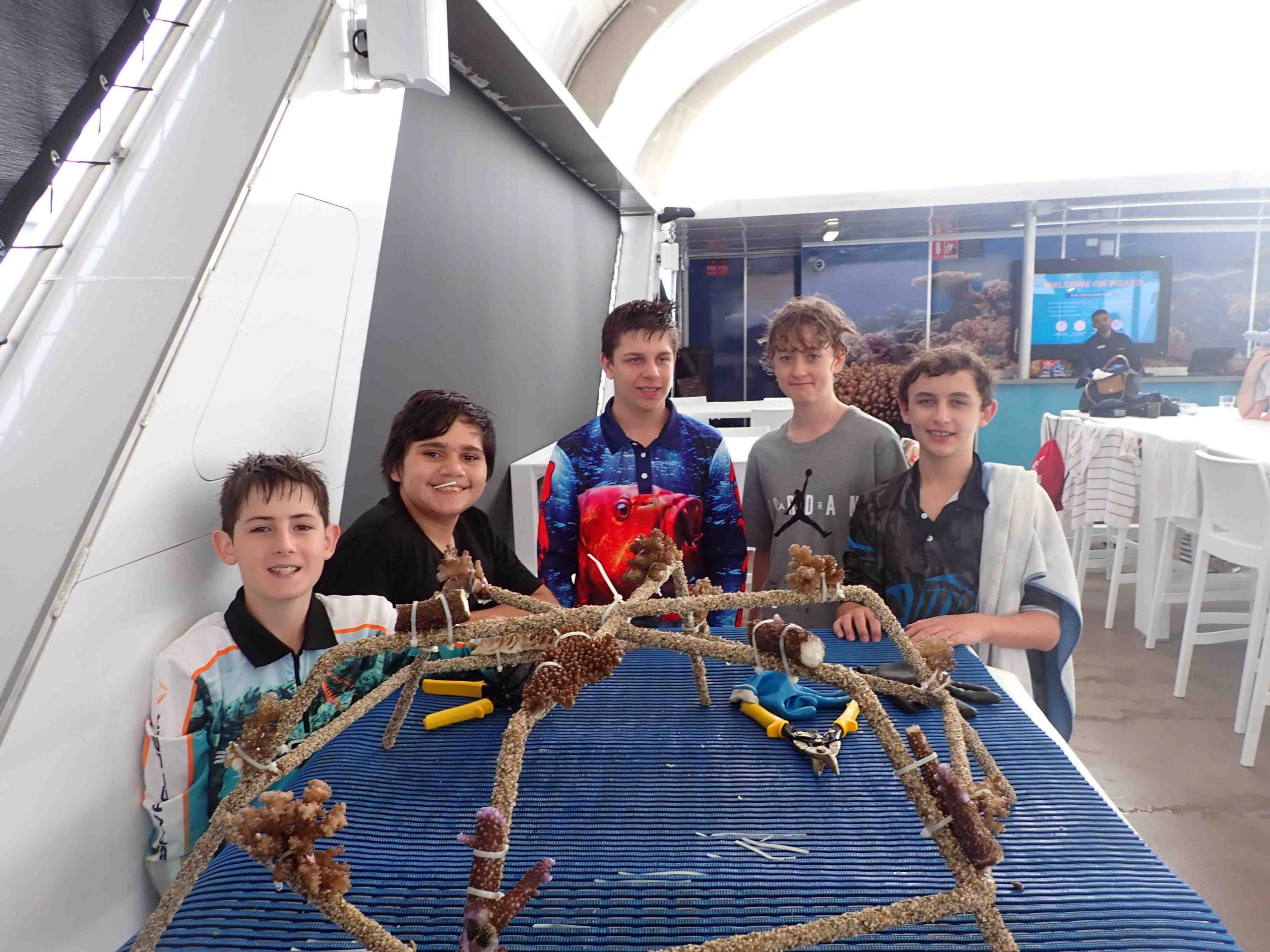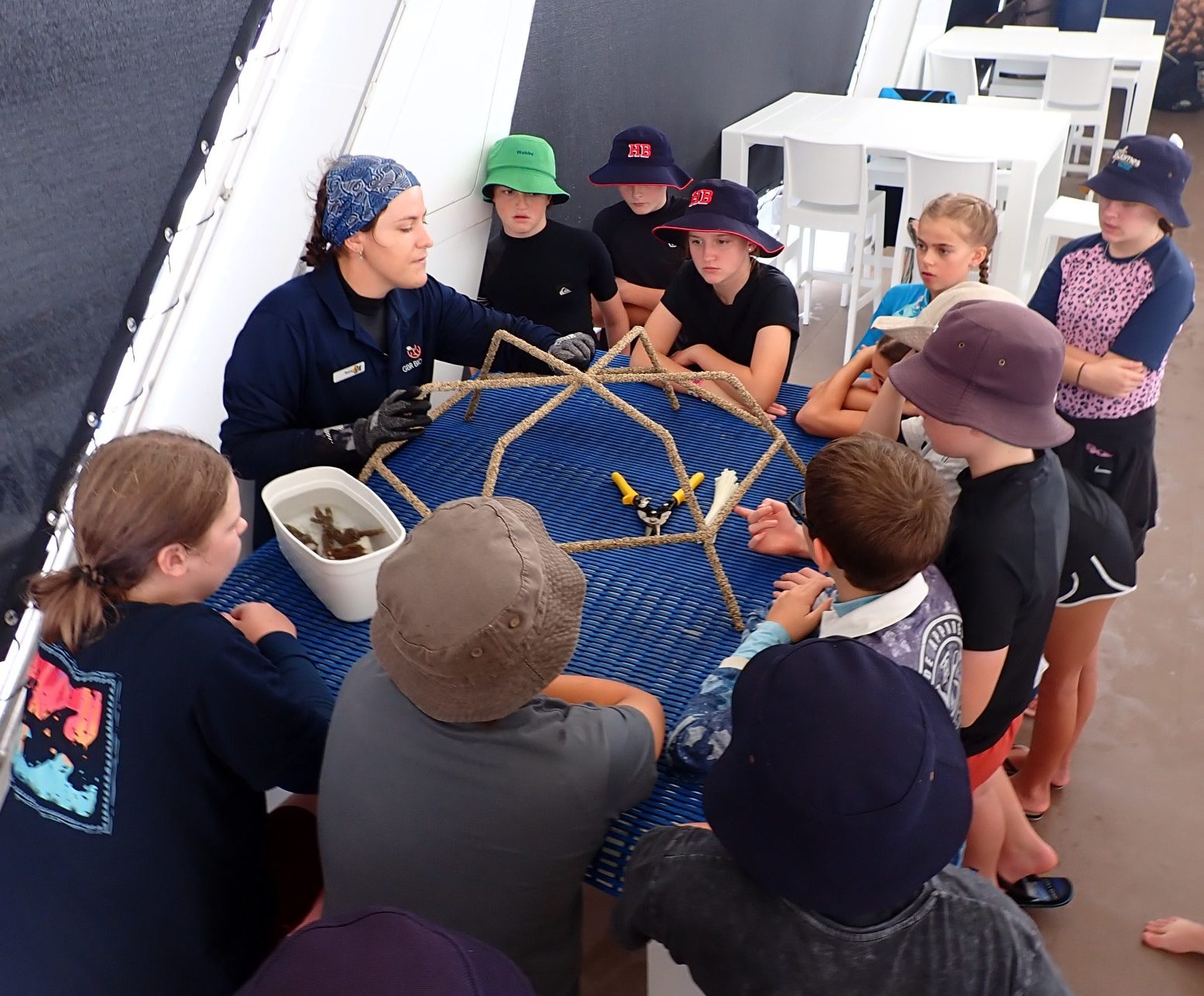
St James Lutheran College visits the Reef
On the 8th of June GBR Biology was lucky enough to host St James Lutheran College to Remoora on Moore Reef. Students had a full day of educational activities targeted to their age and were extremely lucky to be on the reef at the same time as a team of dedicated scientists from GBR Biology, Mars and JCU, as well as Yirrganydji and Gunggandji rangers, Citizens of the Great Barrier Reef and Biopixel.
Each school that visits the reef with GBR Biology gets dedicated time to spend in the on-board laboratory to complete curriculum linked activities. For St James Lutheran this meant getting to see firsthand the work that this team was completing and an account of the project from some of the passionate scientists that are involved. The team of Marine Biologists were on Moore Reef completing the 5th build of the resilience network Mars stars. The Mars stars are structures that when linked together stabilise an area of loose coral rubble that has not consolidated independently over the years. The area on Moore Reef that is being built has had coral rubble beds since cyclone Yasi hit Moore Reef in 2011.
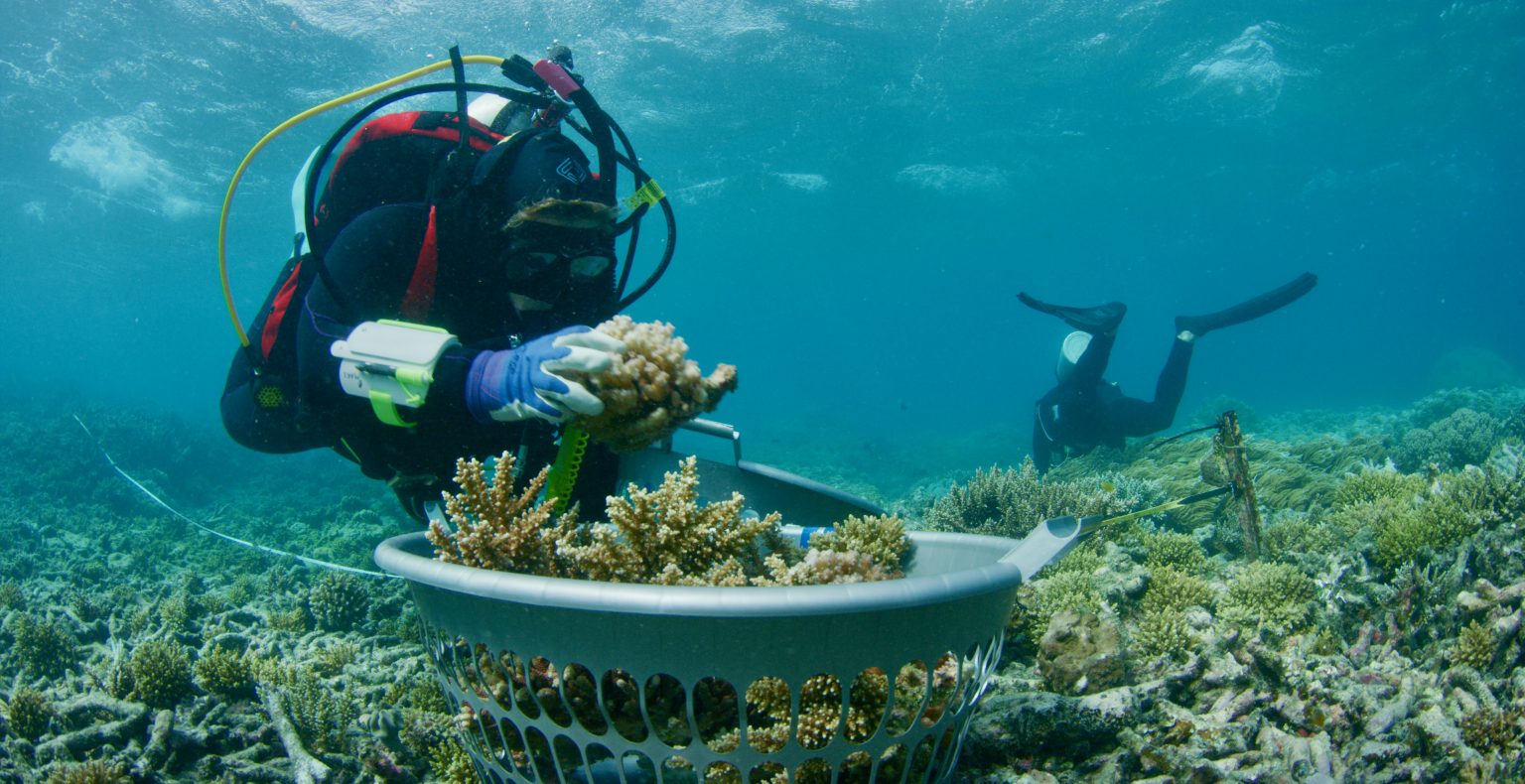
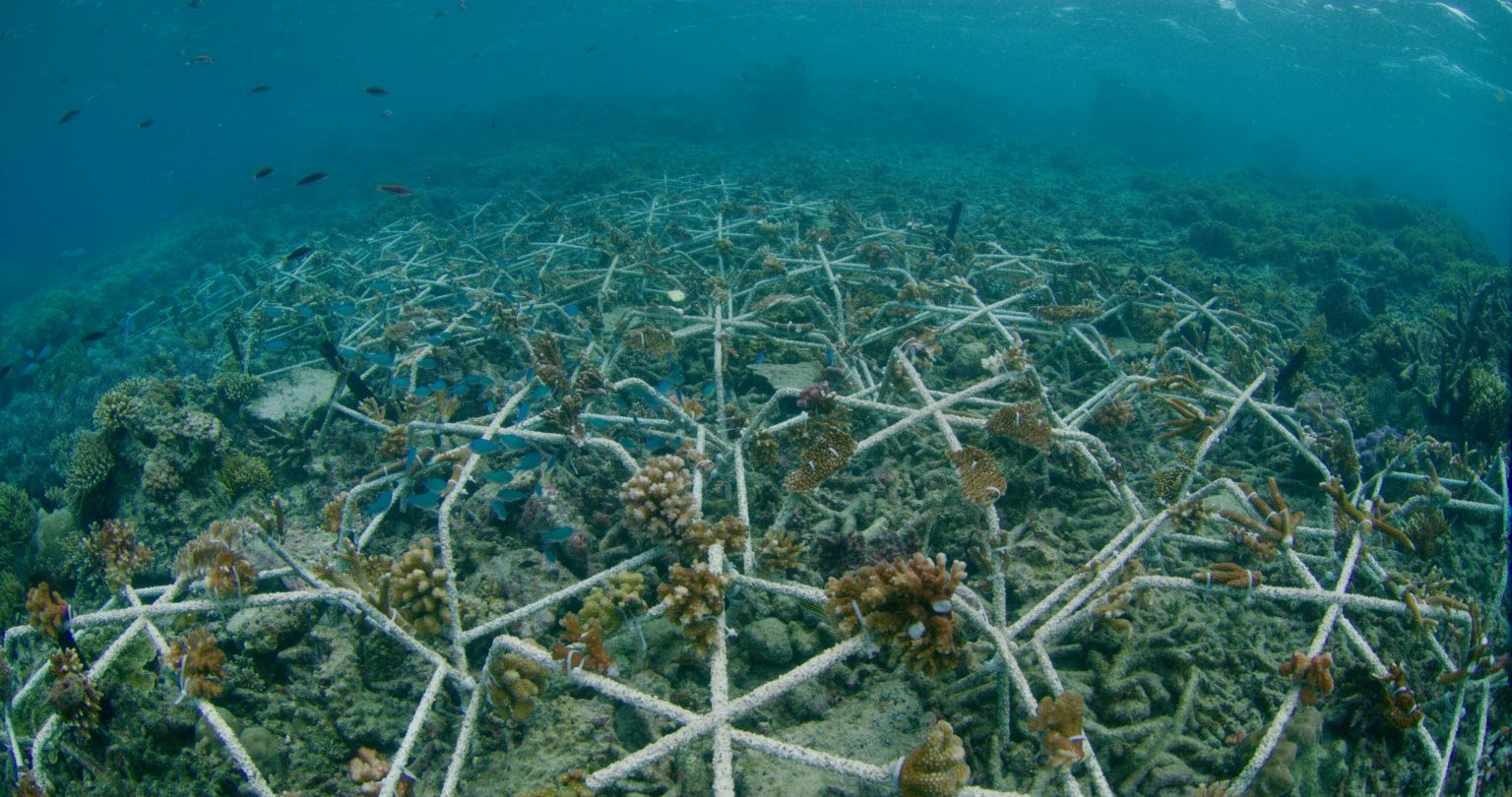
The process of the build includes scientists completing habitat assessments to determine the area in which we are working will benefit from the process and it will not be detrimental to the reef in any way. Once this is completed, we begin to collect fragments of opportunity, these are loose corals that are still living but have been dislodged from the reef platform and are now rolling along the seafloor. Once we have the corals, trained biologists begin the process of identifying which species we have collected to attach to the structures. Corals are then fragmented further to the correct size to attach to the stars. Once each star has the appropriate number of corals, they are placed in the water ready to be built into the resilience network.
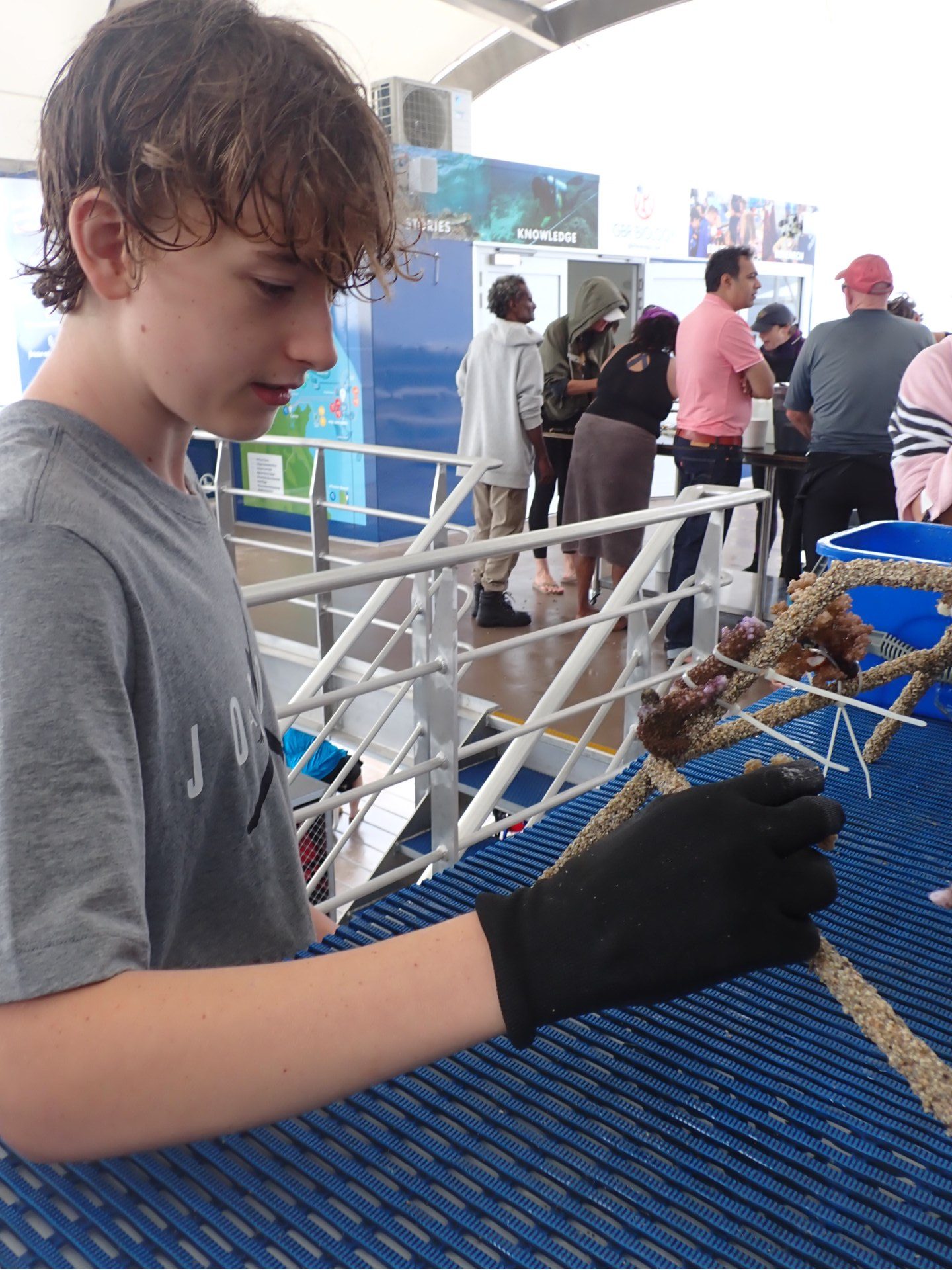
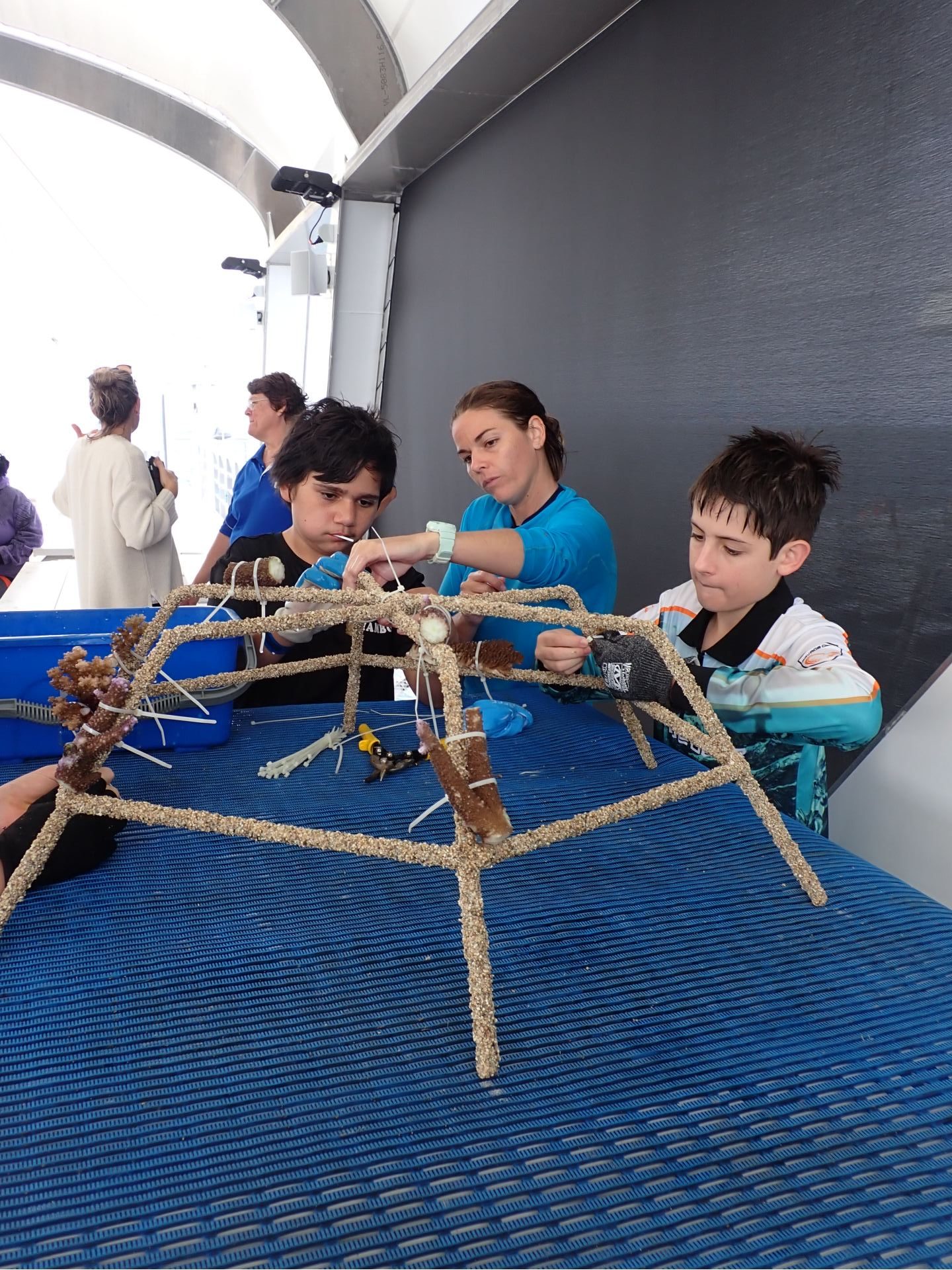
Students at St James not only got to learn about this process but also made their own reef star to be placed into the network of frames. Our team at GBR Biology will do monitoring of the stars over the next 18 months and will provide updates to the school, teachers and students on the health of their star and the important role the star has played in increasing coral coverage in a cyclone damaged area of the reef.
For more detailed information on the Mars project in partner with GBR Biology please read our research blog Coral Rubble Stabilisation. /2022/05/30/coral-rubble-stabilisation/

